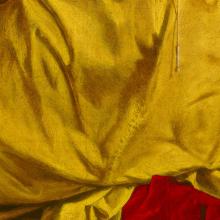In recent years color has become the focus of scholarly discussion on the interactions between art, craft, science, and technology. While this discussion has drawn in scholars from various disciplines, the interactions between categories of art, craft, science, and technology, unreflectively defined according to modern disciplines, have not been helpful in understanding color in the early modern period. What we have also been badly missing is an investigation into the rich variety of color practices—engagements with materials, productions, ordering, and conceptualizations of color—before and during the first half of the seventeenth century. While often lumped together as "pre-Newtonian," these diverse practices deserve proper historical analyses on their own terms without the subtle distortions introduced by teleological narratives. The Working Group examined a variety of actual engagements with color, as "practices" based on materials (e.g., wood, pigment, minerals, gems, manuscripts, books, prints) and products (e.g., gunpowder, miniatures, theories, books), shaped by notions of skill and expertise, and guided by intended audiences, consumers, and patrons.

Working Group
(2014-2015)
Early Modern Color Worlds
- Sven Dupre Doris Oltrogge Anna Marie Roos Simon Werrett Tawrin Baker Barbara Berrie Fokko Jan Dijksterhuis Romana Filzmoser Karin Leonhard Andrew Morrall







